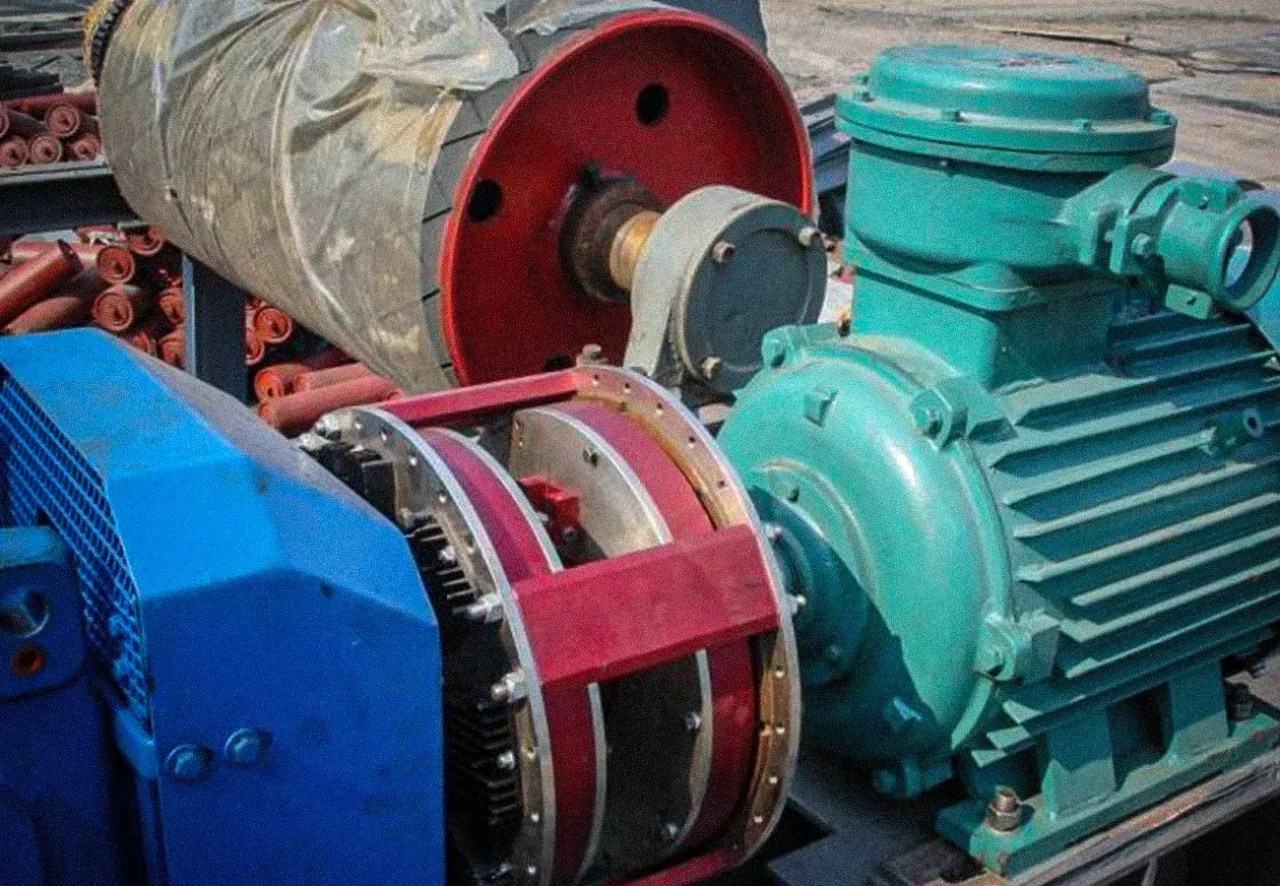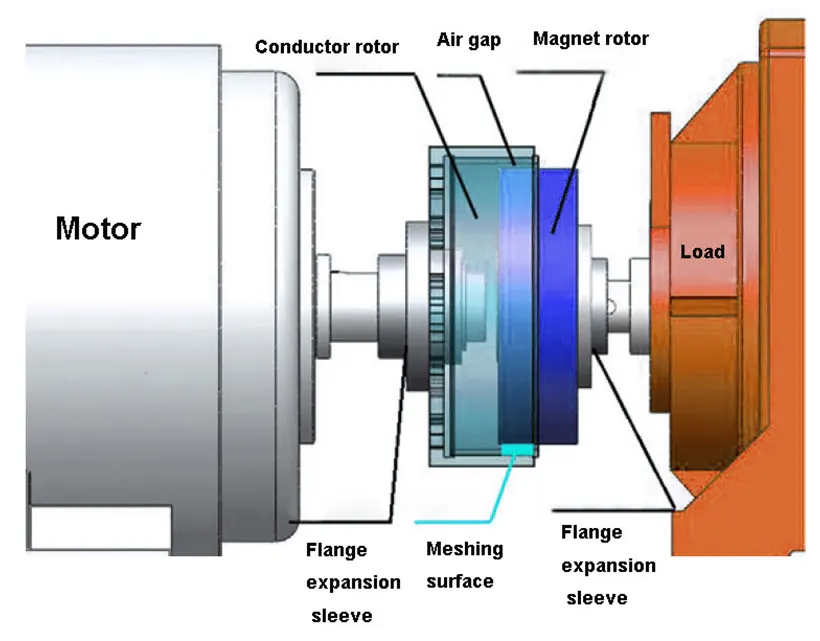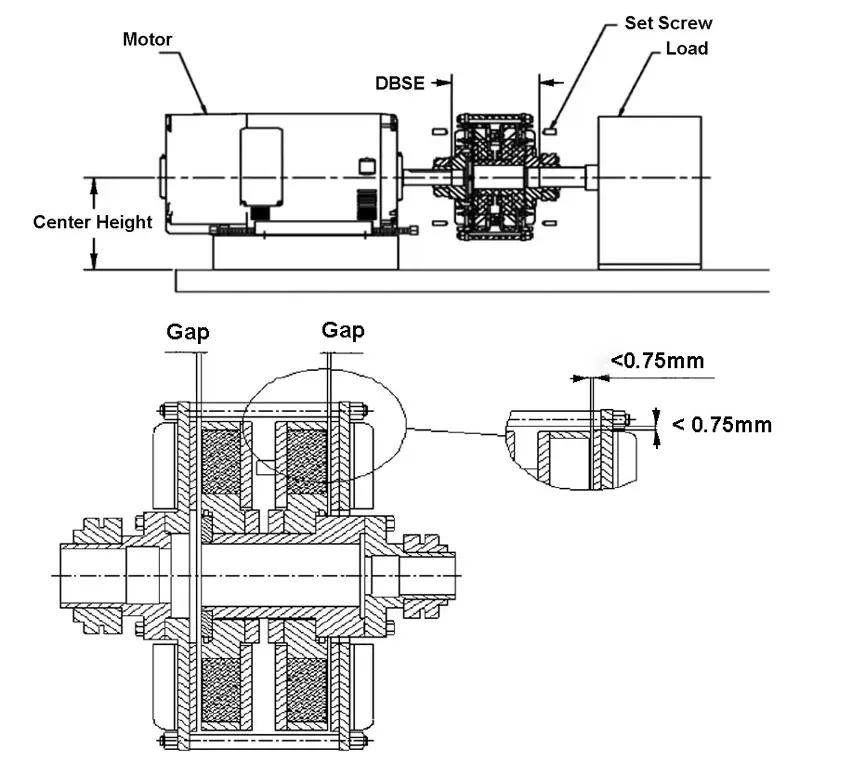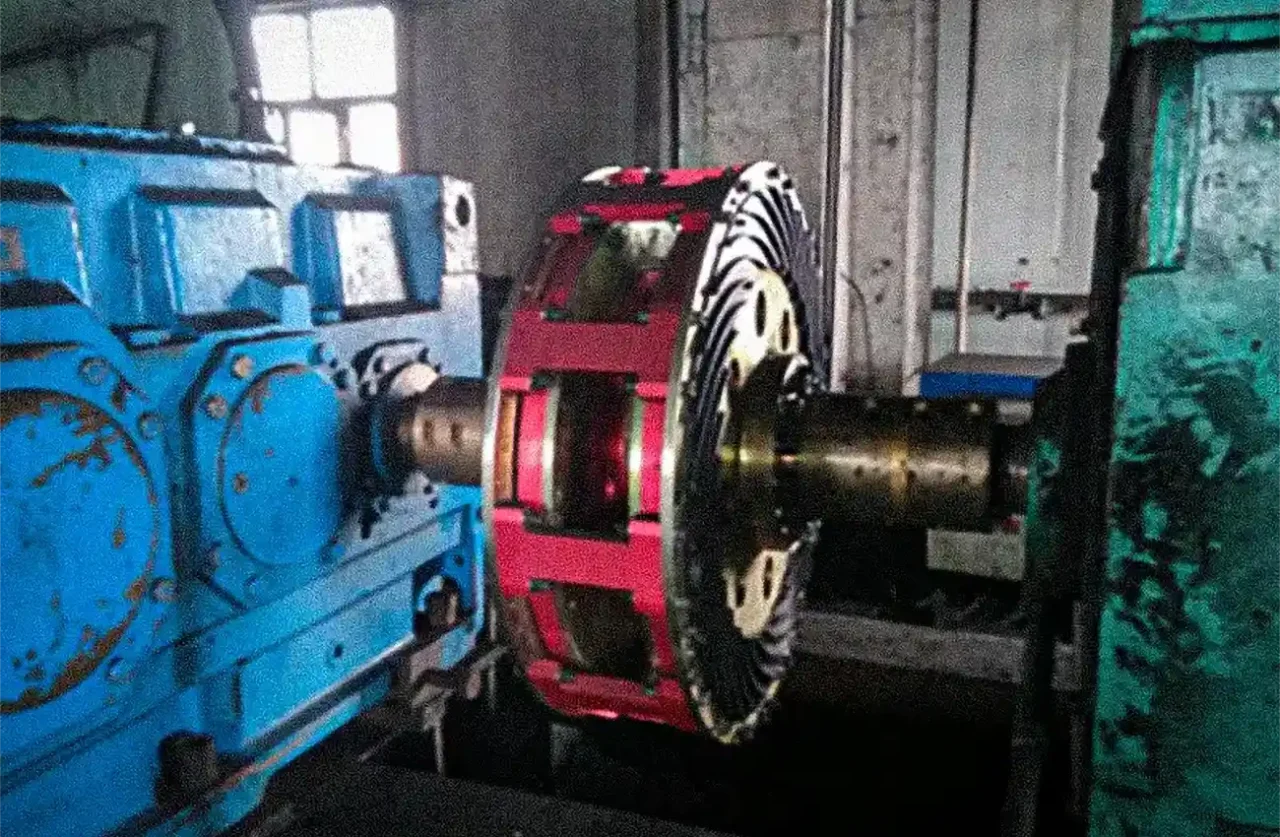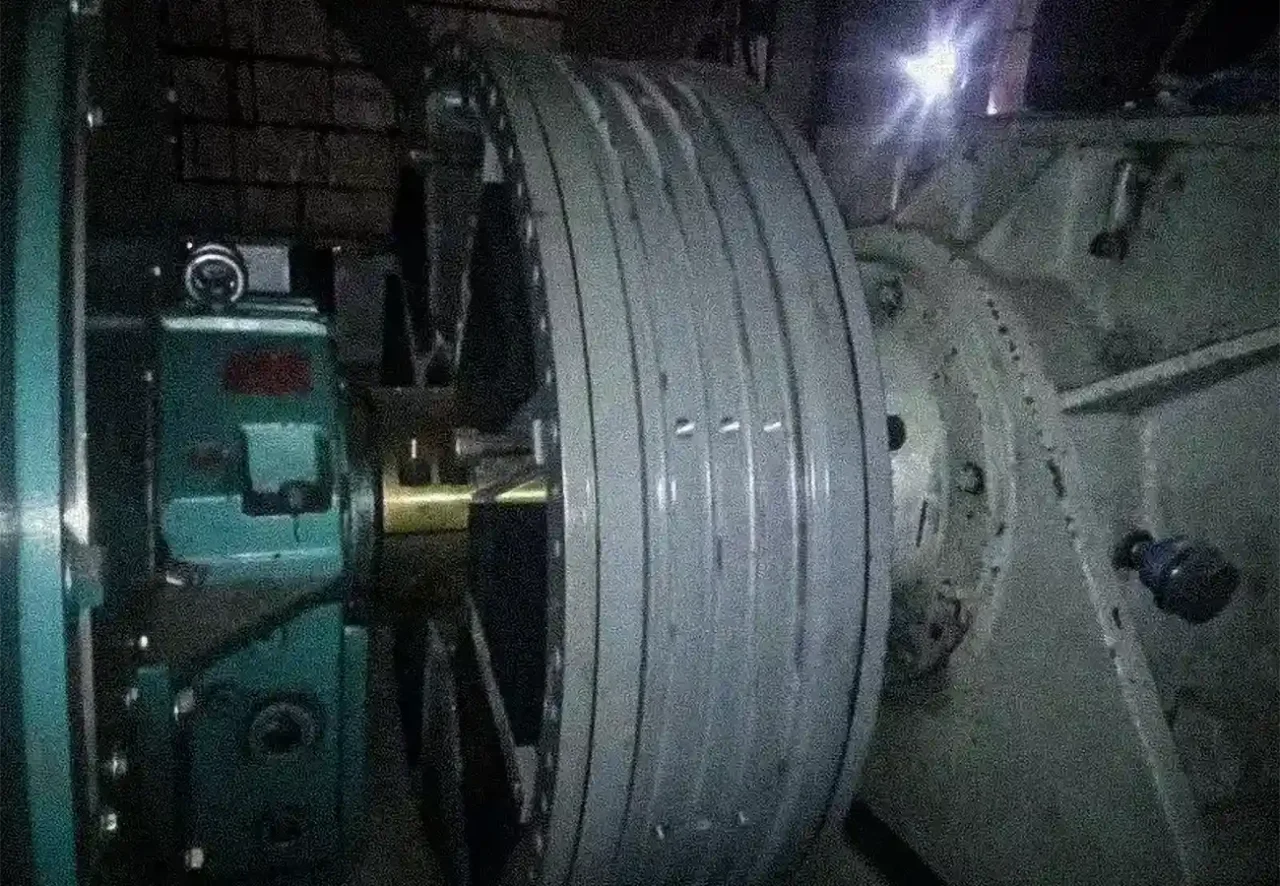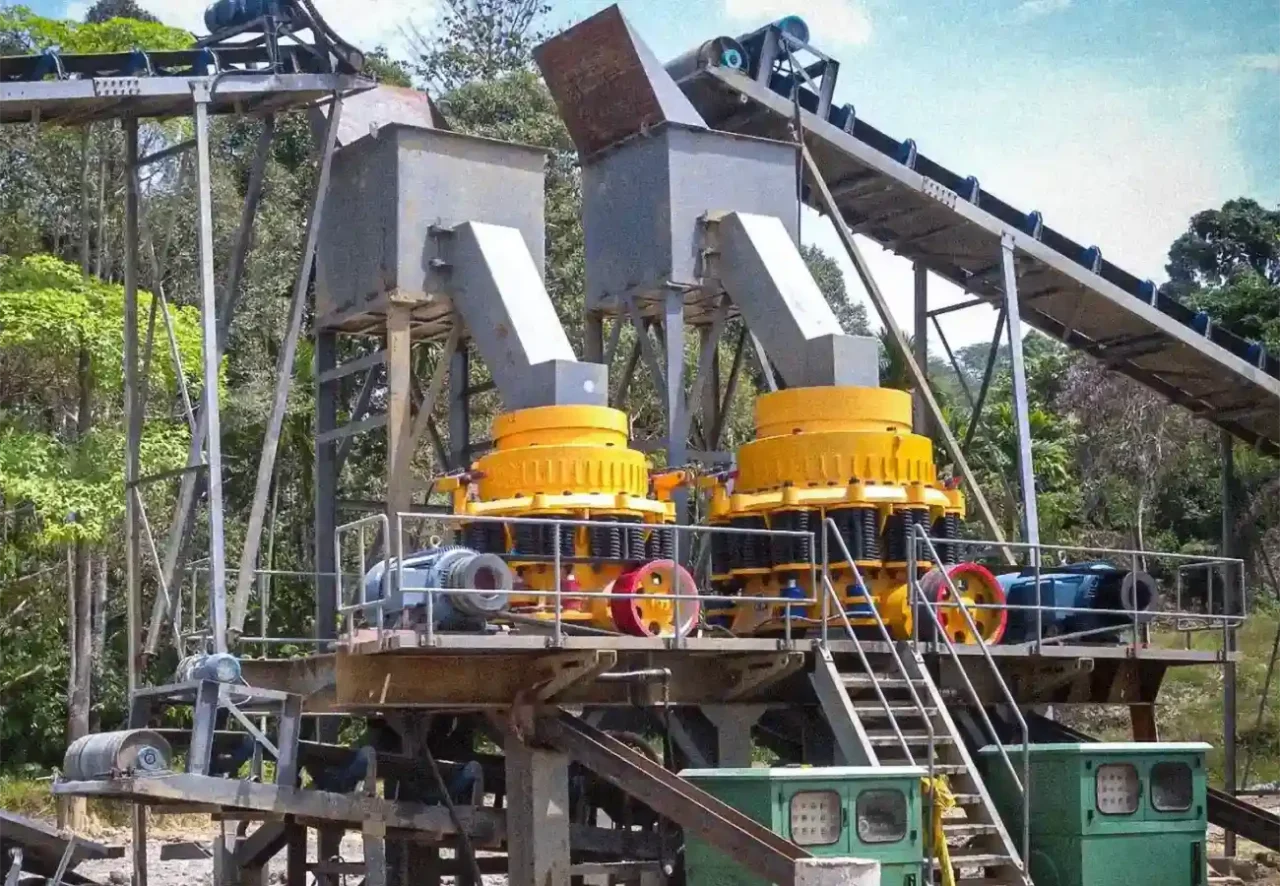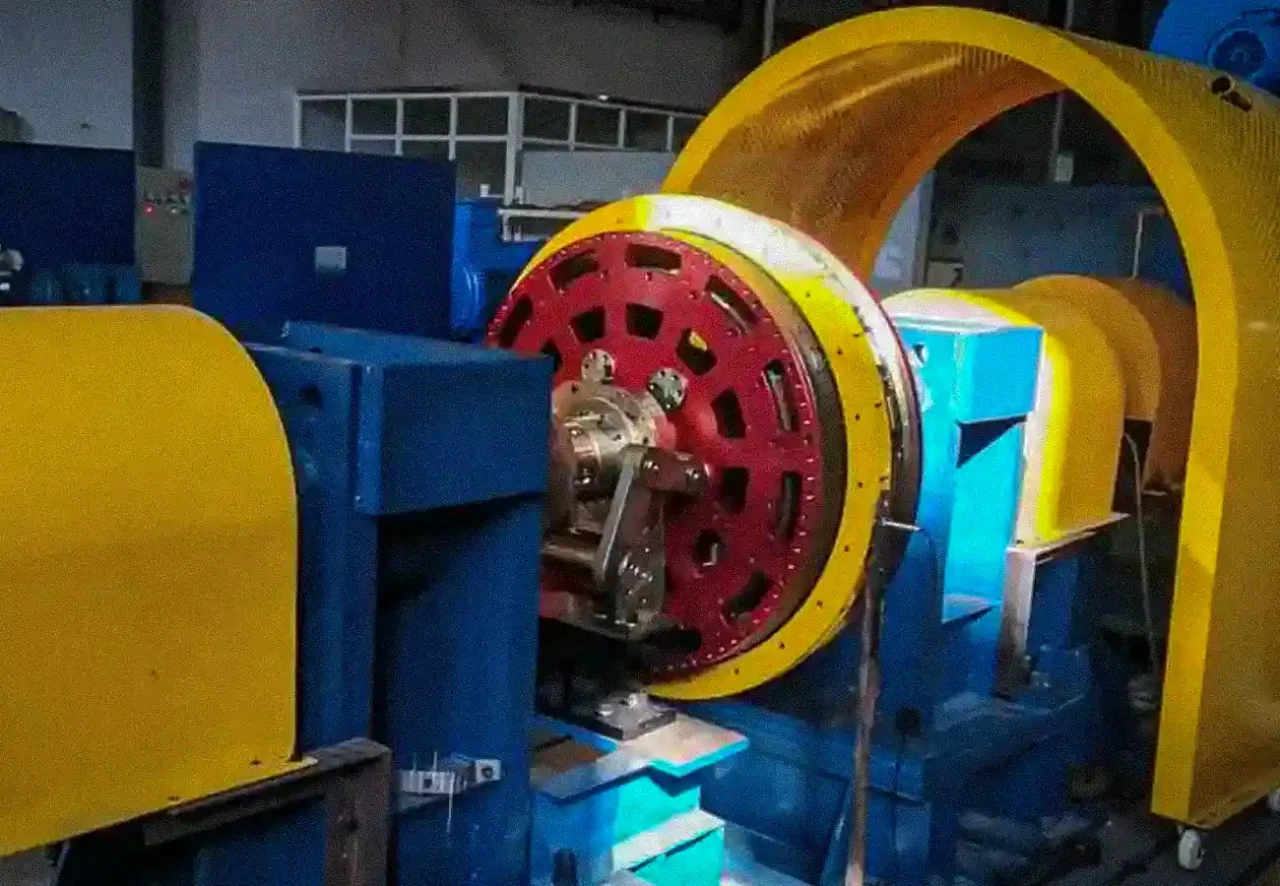Coal Processing Plant – China Ningxia
Project Background:
The customer is a leading coal preparation plant that processes raw coal through a series of conveyor belts, separates impurities and transports the final product for further processing. 12 million tons of raw coal are processed and washed each year.
Due to the challenging working environment, the plant uses a traditional C301 belt conveyor transmission to transport raw coal. The mechanical coupling transmits power from the motor to the transmission system and often fails. The customer sought a more efficient and reliable solution that could handle heavy loads, reduce maintenance and minimize system downtime.
Problem Points:
The existing rotating device is a traditional hydraulic coupling connection method, which uses an asynchronous motor to connect the reducer, hydraulic coupling, and drive roller transmission structure, and the operation of each motor on the line is centrally controlled through the control room.
- Low power factor, high energy consumption, and high starting current;
- It is difficult to handle the high loads and vibrations generated by large conveying systems;
- The power transformer has a large capacity, unstable operation at startup, and a certain impact on the belt;
- The front-end reducer has large mechanical losses, low transmission rate, low operating efficiency, and high energy consumption, which does not meet the requirements of energy conservation and environmental protection;
- The transmission device has a complex structure, a large workload for daily maintenance, difficult installation and disassembly, and high operating and maintenance costs;
- The hydraulic coupling with oil as the working medium is improperly maintained and prone to fire;
- The mechanical coupling used in the conveyor system is subjected to continuous impact loads, causing it to wear quickly. This leads to high maintenance costs and frequent equipment downtime;
- Since the overall transmission device is a traditional coupling, it has a short service life in the coal processing workshop, which is often exposed to dust, moisture and temperature changes, and generally needs to be replaced after 2 to 3 years;
Impact on operations:
The production line of the plant often stops due to the need to repair or replace faulty couplings, which not only increases costs, but also disrupts the overall operating process and reduces the overall productivity of the plant. In addition, the need to constantly monitor and replace parts has brought unnecessary maintenance burdens to the technical team.
In view of the above problems, in order to improve the efficiency of the transmission device and reduce the burden of the reducer, the most effective way is to improve the hydraulic coupling.
Solution:
In order to meet these challenges, Osencmag consulted a lot of information according to the technical parameter requirements, and finally designed and developed a customized torque-limiting magnetic coupling for conveyor belt applications. The magnetic coupling is designed to eliminate direct mechanical contact and provide a more reliable and efficient solution for torque transmission.
Magnetic Coupler Specifications:
The following table outlines the key specifications of the magnetic coupler tailored for the client’s conveyor belt system:
| Feature | Specification |
|---|---|
| Magnet Type | NdFeB (Neodymium Iron Boron) |
| Temperature Range | Up to 230°C (for high-temperature areas) |
| Power range | 0 to 1 000 kW |
| Speed range | 0 to 3 600 rpm |
| Torque range | 0 to 12 000 N·m |
| Dimensions | Customized to fit existing conveyor belt system |
| Housing Material | Cold-rolled steel, corrosion-resistant coating |
| Sealing Material | High-grade rubber to prevent dust and moisture intrusion |
| Noise | 85 dB |
| Slip | 2% ~ 4% |
| Distance between shafts | 100 to 300 mm |
| Over torque protection | 2.5x |
| Efficiency | High-efficiency, low power loss during torque transmission |
Key Features of the Magnetic Coupling:
- Non-Contact Torque Transmission: The permanent magnets within the coupling allow for efficient torque transfer without any physical contact between the components. This eliminates wear and tear, reducing the need for frequent maintenance and part replacements.
- Increased Load Handling Capacity: The magnetic coupling’s design allows it to manage high loads and vibrations, ensuring stable power transmission even under demanding conditions.
- High-Temperature and Harsh Environment Resistance: With a temperature tolerance of up to 230°C, the coupling is well-suited for the high-temperature environment of the conveyor system. It is also resistant to dust and moisture, common issues in coal preparation plants.
- Low Power Loss: The magnetic coupling is engineered to minimize power loss during torque transmission, leading to improved energy efficiency and reduced operational costs.
- Maintenance-Free Operation: The non-contact design means there is less wear and tear, extending the lifespan of the coupling and significantly reducing maintenance intervals.
Installation Preparation (Pre-Installation)
Before installing the magnetic coupling, we first check the matching dimensions of the motor and the load flange to ensure a smooth installation process and avoid potential problems. The following are the preparations we made before installation:
- The shaft must be deburred, degreased, cleaned and dried. The roughness of the matching section between the shaft and the flange should reach 1.6~3.2. Mark each shaft according to the length of the corresponding flange.
- Strictly control the recommended maximum radial clearance between the shaft and the flange (see the table below).
- To improve the dynamic balance of the motor and the load shaft, install a half key in the keyway and check that the half key does not protrude from the circumferential surface of the shaft.
| Shaft diameter | Big radial gap | |
|---|---|---|
| From | To(include) | |
| 28 | 49 | 0.038 |
| 49 | 120 | 0.051 |
| 120 | 180 | 0.076 |
Installation Process (During Installation)
During the installation process, we ensured that the following steps were followed to ensure the correct installation of the magnetic coupling and maximize its performance:
- Removing the original coupling: First, we removed the damaged traditional mechanical coupling in the conveyor system. The removal work was performed by our technical team to ensure that no damage was caused to other parts of the conveyor.
- Installing the magnetic coupling: Install the magnetic rotor assembly to the load shaft and connect the motor and conductor rotor components. During the installation process, we ensured that the coupling was fully docked with the shaft of the conveyor drive system and correctly aligned with the mounting holes of the transmission part.
- Removing the drive fixing screws: Remove the fixing screws on both sides of the drive and store them away from the drive.
- Alignment of the magnetic drive rotor components: The purpose of aligning the magnetic drive rotor components is to make the air gap between the magnetic rotor and the conductor copper plate equal, and the air gap value at each position is equal (error <0.75mm). The schematic diagram of the magnetic drive air gap is as follows. The steps for aligning the rotor components of a magnetic drive are as follows:
1) Angular and axial alignment: measure the distance between the conductor rotor and the end face of the magnetic rotor in the drive. Radial alignment: measure the distance between the outer circle of the magnetic rotor and the air gap plate.
2) Move the motor and use the motor foot screw and motor foot gasket to complete the alignment. When all the measured values meet the requirements of the above figure, the alignment is completed.
3) Tighten all motor anchor bolts.
4) Recheck the alignment. Radial alignment and tightening the motor anchor bolts may change the angular and axial alignment. If the alignment data is incorrect: loosen the motor anchor bolts and repeat step 2 until the alignment is correct.
Finally, for parts that require electrical connections (such as control systems), we work with the customer’s electrical engineers to complete all necessary electrical wiring work to ensure that the system can operate normally.
Post-Installation Commissioning (System Debugging)
After the magnetic coupling was installed, we debugged the entire system to ensure that the system runs smoothly and achieves the expected results:
- Magnetic field docking: After the installation, we carefully checked the magnetic field of the magnetic coupling to ensure that the magnetic force transmission was not subject to any external interference or deviation. By adjusting the position, we ensure the stability of the magnetic field to ensure efficient torque transmission.
- Pre-startup inspection: We first checked the entire conveyor system to ensure that all connection points were tightened correctly, the coupling was firmly installed, and the drive motor and the transmission components of the conveyor system were working properly.
- Commissioning preparation: Confirm that the wire rotor set screws have been removed – jog the motor to confirm whether the direction is correct – install the soundproof cover or protective cover.
- System test run: Start the motor – measure the vibration of the motor and the load – pay attention to any abnormal sound during operation, and monitor the temperature and running smoothness of the coupling.
- Load test and adjustment: After the system is running normally, we carried out a load test. We gradually increased the system load and observed the performance of the magnetic coupling to ensure that it can still work efficiently under high load. During the entire test process, the magnetic transmission effect was monitored in real time to ensure that there were no torque transmission issues.
- Final commissioning and customer acceptance: After confirming that the system was running stably, the entire conveyor belt system was finally commissioned and accepted together with the customer to ensure that the customer was satisfied with the system’s performance. Our engineers also conducted detailed training on site for the customer’s operators to ensure that they could properly operate and maintain the newly installed magnetic coupling.
Result Summary:
After installing the magnetic couplers, the plant experienced significant improvements in several key performance indicators:
- The non-contact nature of the magnetic coupler eliminates the need for frequent repairs and replacements. This significantly reduces downtime;
- The transmission efficiency of the 301 conveyor belt in the coal preparation plant has been significantly improved, the coal output per hour has also increased, and the energy saving and environmental protection effects are significant;
- Torque limiting enables automatic stall protection, reducing faults and wear on the entire motor drive system. Maintenance costs are significantly reduced;
- Magnetic couplers are able to withstand high loads and resist external factors such as dust, moisture and temperature fluctuations found in current production environments;
- At the same time, the operating cost of the system is reduced, and the efficiency of the coal preparation plant is further improved: after the transformation of the 301 conveyor belt transmission device, the transmission efficiency is increased by 10%, the power consumption is reduced by 20%, and the annual electricity bill can be saved 600,000 yuan; due to the use of magnetic coupling device Lubricating oil will no longer be used, and the annual lubricating oil cost will be reduced by 100,000 yuan. In terms of equipment maintenance and repair, it is relatively simple, and the annual maintenance cost will be reduced by 300,000 yuan. The annual comprehensive benefit is expected to be 1 million yuan.
It can be seen that the transmission method without mechanical connection using magnetic coupling after modification has obvious advantages over the traditional hydraulic coupling transmission method. The plant now operates with greater reliability and energy efficiency, which brings both short-term and long-term benefits.
